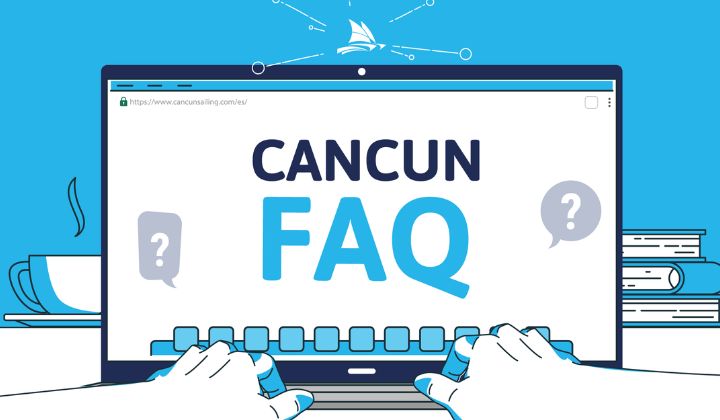4 min read
Sargassum season in Cancun. Does it affect your vacation?
 Giovanna Ricalde
:
Sep 22, 2022 3:19:42 PM
Giovanna Ricalde
:
Sep 22, 2022 3:19:42 PM
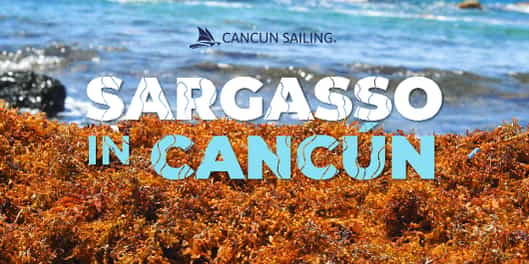
Imagine planning your vacation to the Caribbean and arriving at your hotel to find sargassum on the beaches of Cancun. Don't let this stop you! 👁️ Come and discover the measures being taken to ensure your wonderful vacation.
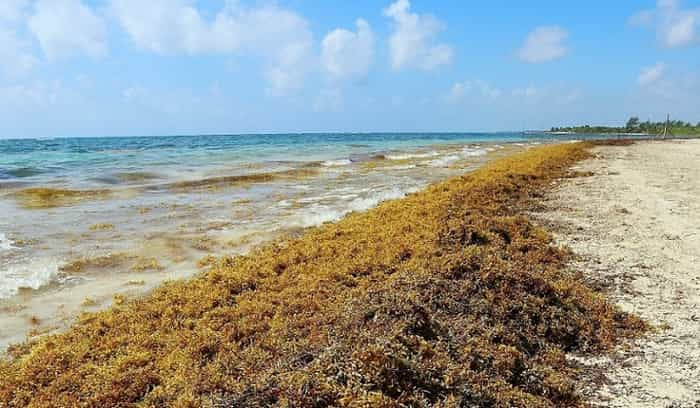
There is nothing more unpleasant than walking onto a beach full of sargassum. Getting close to a large concentration of these algae is a smelly experience and something we don't want to recommend. But let's see what governments, hotels, and, of course, citizens are doing to solve the sargassum in México in 2024:
Browse through the content
What is sargassum?
Sargassum is a brown seaweed dragged from the Atlantic Ocean to the Caribbean. Sargassum is a refuge and habitat for many species, such as plants, crustaceans, birds, fish, turtles, and even whales. It has gas-filled vesicles that help it stay afloat and prevent it from sticking to the seafloor.
In an average environment, when sargassum reaches the coasts, it provides fertilizers and promotes the biodiversity of marine birds and wildlife.
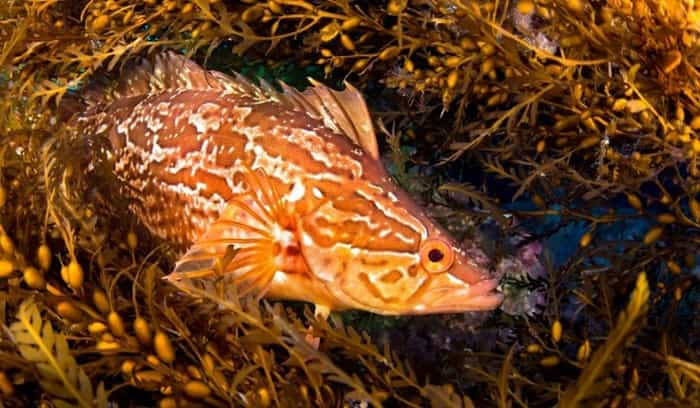
The problem with sargassum
When sargassum accumulates in atypical quantities, the algae rot and emit toxic gases, causing the death of native species. There are several hypotheses about the origin of sargassum in the Caribbean, such as the change of Atlantic currents, the deforestation of the Amazon, and the increase of nutrients generated by human activity, which fertilize the algae and favor their growth.
The first massive arrival of sargassum in Mexican Caribbean waters was recorded in 2013 and continued during the following years. In 2019, the Mexican Navy collected more than 85,000 tons of sargassum, a record figure so far.
Among the main problems derived from sargassum are:
-
Impact on the tourism industry by changing the color of the sea and producing foul odors.
-
Impact on the fishing industry.
-
Reduction of light and oxygen in deep seas.
-
Damage to sea turtle communities.
-
Damage to the beaches. Removing sargassum often requires machinery that can damage beaches and nearby marine ecosystems.
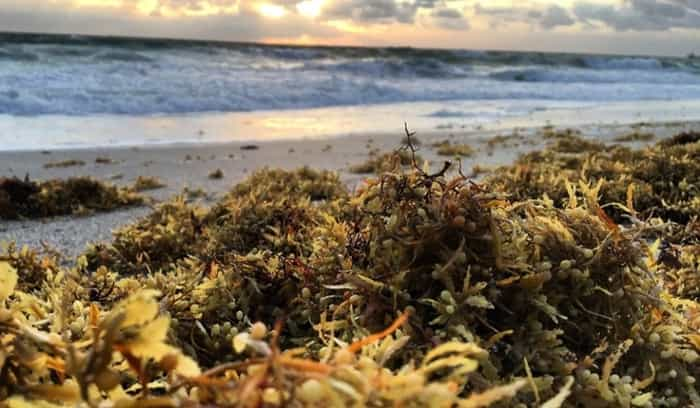
Does sargassum affect health?
Typically, tourists and visitors avoid sargassum because it is unpleasant to the sight and touch. However, if you are a person who constantly handles these algae (cleaning staff, operators of sargassum removal machines, etc.), you should be careful because the algae tends to rot, generate bacteria, and be a source of infection. Another threat you could face is stepping on an object hidden among the seaweed. Remember to wear closed shoes and gloves if you plan to approach the sargassum.
Why is there a sargassum in Cancun?
Where does the sargassum come from in Cancun, Riviera Maya, Isla Mujeres, and Cozumel?
Changes in water temperatures and Atlantic currents push sargassum to Cancun and other Quintana Roo destinations such as Isla Mujeres, Cozumel, and the Riviera Maya.
Sargasso season in Cancun
The sargassum season in Cancun is between April and August, as well as the spring and summer months.
What can you do in Cancun if there is sargassum on the beach?
Here we have some honest suggestions about the activities you can do if there is sargassum on the beaches:
-
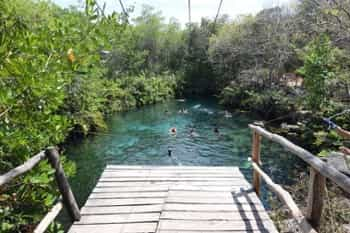 Visit archaeological sites within the Mayan Museum, such as El Meco, El Rey, or San Miguelito.
Visit archaeological sites within the Mayan Museum, such as El Meco, El Rey, or San Miguelito. -
Explore cenotes like Chac Mool, Manati, Cristalino, and Jardin del Eden.
-
Visit ecotouristic parks such as Native Park, Selvatica, The Monkey Sanctuary, and Rio Secreto.
-
Visit free-sargassum beaches like Playa Norte in Isla Mujeres. The amount of sargassum it receives is minimal, and nearby hotels and businesses clean their portion of the beach.
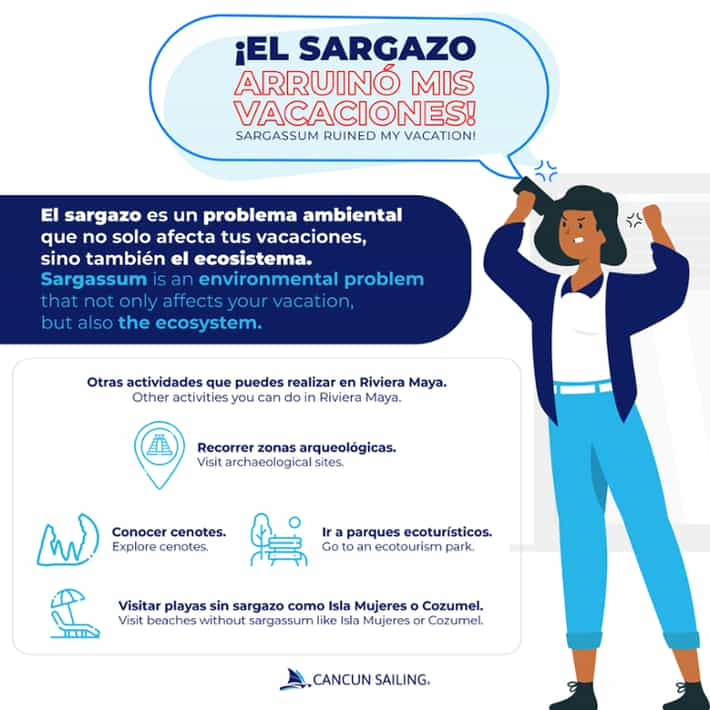
Does Sargasso affect my Isla Mujeres catamaran tour?
Sargassum does not affect your tour or private catamaran charter to Isla Mujeres. Our marinas are constantly cleaned, and the reef snorkeling activity is done in the open sea long after the sargassum concentration zone.
So you can enjoy a catamaran tour even if the sargassum is on the beach 👍.
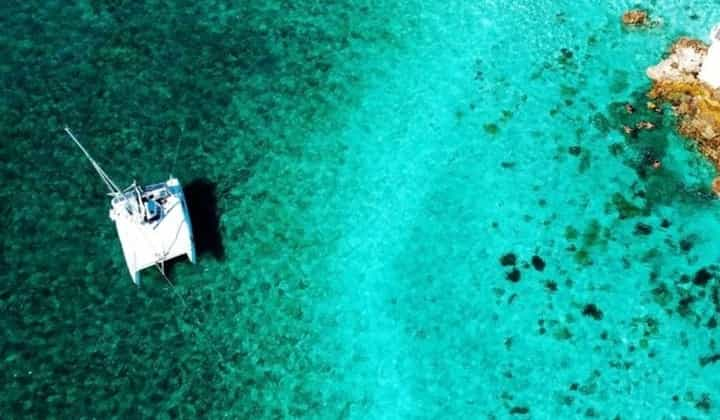
How to end the sargassum? 👍
Although this algae can be unpleasant and smelly, it only affects a small percentage of the coasts of Quintana Roo. Cancun, the Riviera Maya, and the Mexican Caribbean islands are essential destinations for tourism in the country, which is why the government, tourism companies, and citizens are working to keep the beaches free of sargassum.
According to the Integral and Sustainable Management Plan for sargassum, some of the strategies that are carried out to keep the beaches clean of sargassum are:
-
Monitoring and early warning to know the points where sargassum will arrive and establish strategies for its control.
-
Containment and extraction of sargassum in open seas to avoid affecting coastal ecosystems like sea turtle nests.
-
Drying of sargassum to avoid environmental impact and use it to produce products.
-
Promotion of social activities such as volunteering for beach cleanup.
On the other hand, hotels and tourism companies with establishments on the beach also invest resources to clean the portion of the beach assigned to their land to offer their clients a sargassum-free experience.
Of course, these measures should not distract us from reality: Pollution of the seas is the cause of the large quantities of sargassum that reach the coasts, and it is our responsibility as a society to prevent this problem.
What products can be created with sargassum?
Sargassum is used to produce many products, for example:
-
Paper: Companies such as Sarganico produce sargassum-based products such as notebooks, business cards, and paper.
-
Cosmetics: The new trend of Blue Beauty seeks to create beauty products with sustainable ingredients of marine origin and reduce the use of plastics and cosmetic packaging that end up in the trash or the sea. Check out this article from VOGUE that tells us how Mexicans transform seaweed into cosmetics 👈
-
Fertilizers: Seaweeds are considered biological activators and organic biostimulants that increase plant nutrient content. Learn more about this topic in this article on applying seaweed for fertilization.
-
Bricks for construction: Sargassum is used to make organic bricks. These bricks are thermal and resistant to strong winds. Twenty tons of sargassum, equivalent to 2150 bricks, are used to build one house.
To know the current status of sargassum in Cancun and Riviera Maya, visit the Quintana Roo Sargassum Monitoring Network's Facebook page.
Did you find this article helpful? Leave us a comment and let us know if you encountered a sargassum during your vacation. Do you want us to discuss a particular topic? Contact us, and we'll do it!
Posts by Tag
- Avante Environmental Program (6)
- Beach Club (3)
- beaches (1)
- Blue Flag (9)
- Cancun (37)
- Cancun Beaches (10)
- Cancun Party (3)
- Cancun Sailing (27)
- Catamaran Tour (13)
- Contoy Experience Tour (1)
- Events (8)
- Food (6)
- Fun Facts (15)
- Isla Contoy (3)
- Isla Mujeres (29)
- kids activities (1)
- Marine Life (10)
- Mayan Culture (6)
- Mexican culture (8)
- Nature (10)
- News (10)
- nightlife (5)
- party (1)
- Private Charters (9)
- Reef (4)
- SailingTips (10)
- Snorkel (11)
- Sports (3)
- Sustainability (12)
- Travel (41)
- Ventus Social Program (4)
- Whale shark (3)
- Yacht Rental (6)
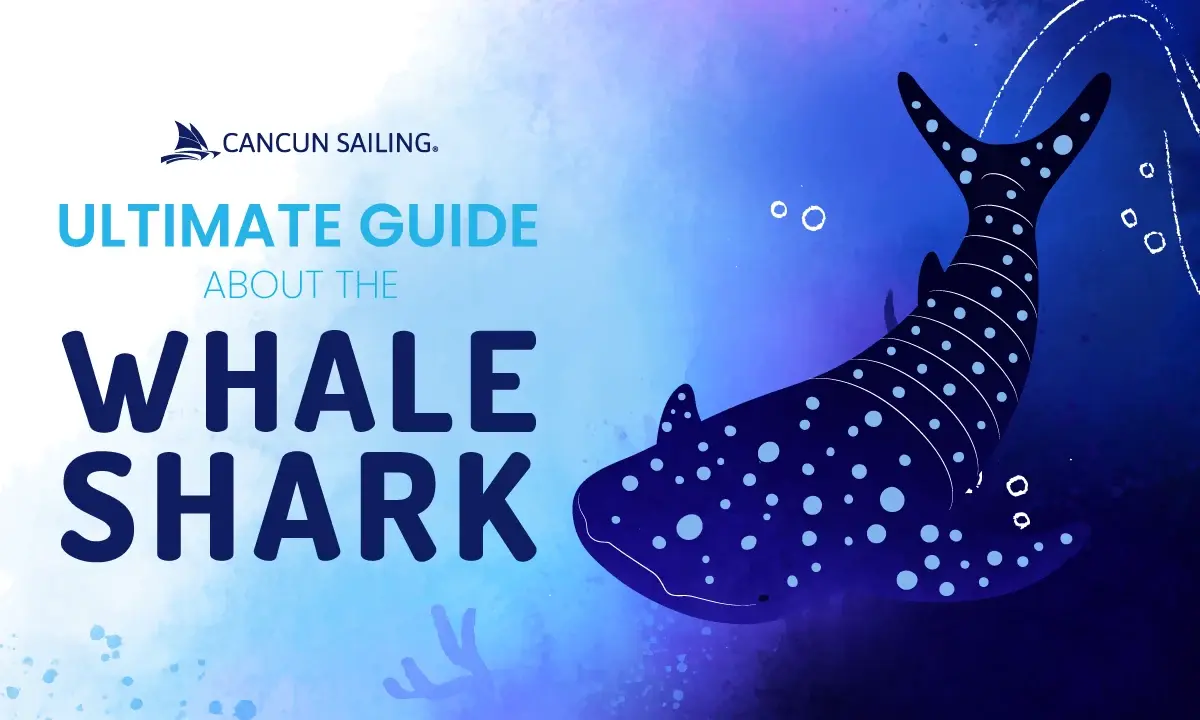
Whale shark ultimate guide: Where and how to swim with the whale shark?
The whale shark is considered the second-largest cartilaginous fish species in the world! Learn this and many other curious facts about the whale...
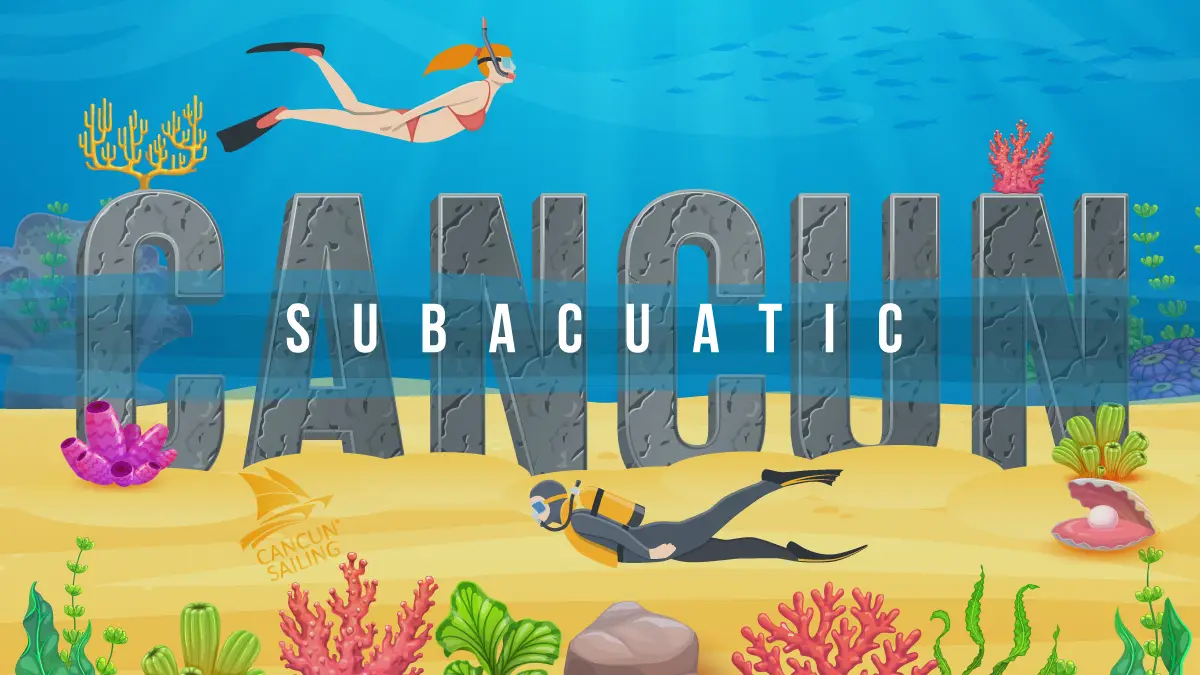
4 min read
Subaquatic Cancun: Exploring the aquatic wonders of the Caribbean
Cancun is Mexico's tourist destination par excellence and is well known for its paradisiacal beaches of fine white sand, crystal clear waters, and an...




